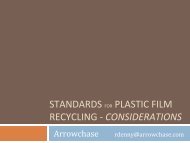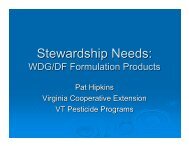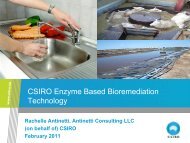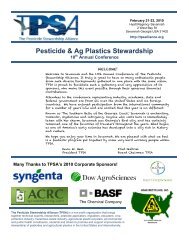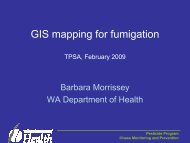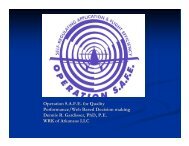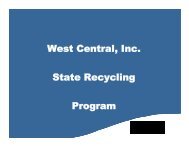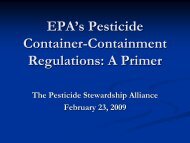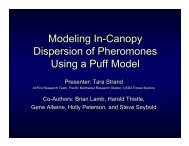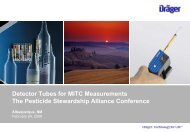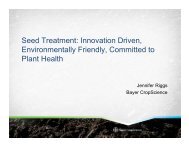Clean Sweep Programs - US Environmental Protection Agency
Clean Sweep Programs - US Environmental Protection Agency
Clean Sweep Programs - US Environmental Protection Agency
- No tags were found...
Create successful ePaper yourself
Turn your PDF publications into a flip-book with our unique Google optimized e-Paper software.
Appendix VIIICOMPARISON OF PESTICIDES <strong>US</strong>ED PER STATEVERS<strong>US</strong> PESTICIDES COLLECTED AT CLEAN SWEEPSAppendix VIII provides information on the estimated amount of pesticides used by the states and theamount of pesticides they have collected and disposed of during <strong>Clean</strong> <strong>Sweep</strong> programs. Data on the amountof pesticide active ingredient used in each state in 1992 and 1997 (from the National Center for Food andAgricultural Policy) was extrapolated to estimate the amount used from 1991 through 2000. EPA assumedthat this same amount was used each decade beginning in the 1960’s to estimate the pounds of pesticide activeingredient used by each state from 1961 to 2000. EPA chose 40 years because many of the pesticidescollected at <strong>Clean</strong> <strong>Sweep</strong> events since 1980 are years or even decades old. Because the amount of activeingredient can range from less than 1 percent to over 80 percent of a formulated product, the total weight offormulated agricultural pesticides used per year is greater. The most common agricultural products containfrom 10 percent to 50 percent active ingredient. This information was used to estimate a range of the amountof formulated product used in each state from 1960 to 2000. The amount of pesticides disposed through<strong>Clean</strong> <strong>Sweep</strong> programs can be compared to the estimated amount used.The information in Appendix VIII can be used to provide rough estimates of the amount of uncollectedpesticides in states with relatively new or less comprehensive programs. Texas has run an extensive <strong>Clean</strong><strong>Sweep</strong> program for 9 years and has collected an estimated 0.06 percent of the pesticides used since 1961.Considering that the Texas program still collects significant quantities of pesticides, including more than 103,000pounds in 2000, it is impossible to know what the final total (and percent) will be in Texas. However, if oneassumes that Texas and Florida farmers and agricultural businesses have had similar pesticide managementpractices, Florida may have quite a bit of unwanted pesticides still requiring disposal. Florida just began acomprehensive <strong>Clean</strong> <strong>Sweep</strong> program last year, and has collected about 0.002 percent of the estimatedamount of pesticides used in the last four decades. If the actual percent that needs to be disposed is similar toTexas’ percent (assume 0.02 percent for simplicity), then the estimated amount that Florida may collect in along-term, comprehensive <strong>Clean</strong> <strong>Sweep</strong> program is an order of magnitude larger than the current amount, orabout 2.9 million pounds.



